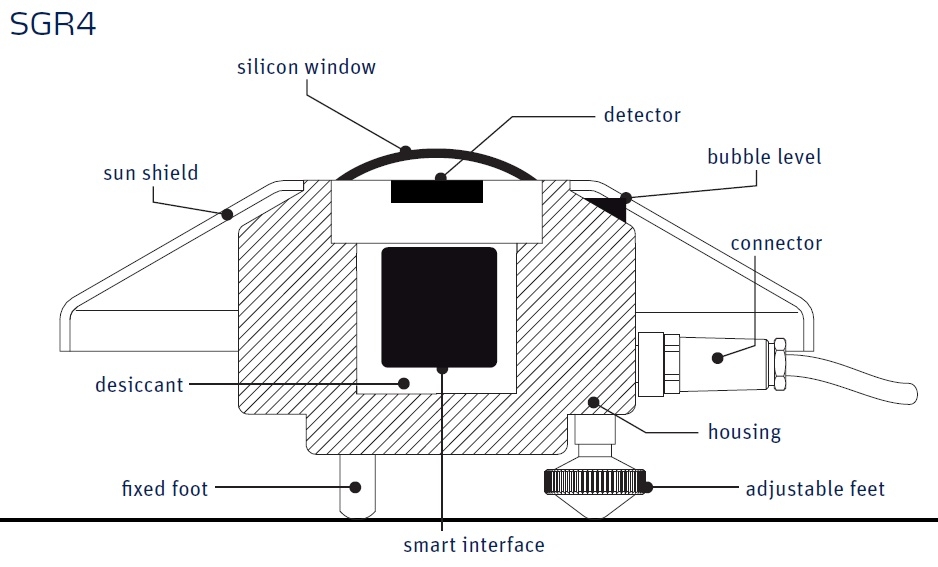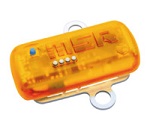The SGR 4 pyrgeometer has a specially designed meniscus dome providing a 180º field of view with negligible directional response error. A hard-carbon coating on the outside of the dome smoothes the spectral response and provides extra protection to the silicon surface. The excellent thermal stability of the dome construction and coupling to the instrument body eliminates the need for dome temperature measurements or dome shading. The SGR 4 can be fitted with the CVF4 ventilation unit to further improve its performance.
To improve the measurement accuracy of the SGR 4 Pyrgeometers the CVF4 ventilation unit can be used. It can be used outdoors under all weather conditions and includes a built in heater to keep the air just above ambient temperature which helps disperse precipitation and melt frost, or even melt snow and ice in cold climates. The CVF4 has a tacho output that can be used to check the proper operation of the CVF4. The output signal is 5V and nominal output should be at 146Hz. Higher frequency would suggest the filter needs replaced, whilst lower frequency could highlight an issue with the ventilator.
Radiation from the sun is mainly in the ‘short-wave’ range from 300 to 4000nm (4μm) that includes the visible and ultraviolet. A proportion of this radiation is absorbed by clouds, aerosols and molecules in the atmosphere, which warms up and radiates ‘long-wave’ radiation. This is far infrared thermal energy (FIR) at wavelengths from 4.5μm to beyond 40μm. Both the shortwave and long-wave radiation reach the Earth, where some is reflected and the remainder warms up the surface. The Earth radiates long-wave thermal energy back to the sky.
The SGR pyrgeometers differ from the CGR pyrgeometers by including a Modbus interface and amplified analogue output. This allows units to be easily exchanged, without the need for any changes to the associated monitoring equipment. The amplified 0-1V output and Modbus address can be matched to existing units and this allows for units to be removed, sent for a re-calibration and then returned to the site until the next calibration date.
Advantages of SGR 4 Pyrgeometers
- Custom designed Silicon Meniscus dome for wider field of view and lower thermal effect.
- Reduced thermal affect removed the need for shading the sensor
- Integral bubble level is raised to the top of the housing and can be viewed without removing the snap-on sun shield, which also covers the connector.
- Screw-in drying cartridge is easy to remove and replenish desiccant.
- Configurable analogue output and RS485 Modbus allows units to be swapped out for calibrations without the need to change other equipment.
- Can be used with the CVF4 Ventilation unit to help maintain sensor body temperature and remove rain, dew, frost and snow.
Diagram

Specification
| |
SGR4-V |
| Spectral Range: |
4400 to 50,000nm |
| Analogue Output: |
0-1V |
| Default Output Range: |
0 to 1,000 W/m² |
| Modbus Interface: |
RS485 Modbus RTU |
| Response time: |
<18 seconds |
| Window heating offset (with 1000W/m² solar radiation): |
<4W/m² |
| Temperature dependence of sensitivity (-10ºC to +40ºC): |
<1% |
| Power Supply: |
5-30vDC |
Power Consumption:
|
5vDC
12vDC
24vDC |
50mW
55mW
60mW |
| Operating temperature range: |
-40 to +80°C |
| Field of view: |
180° |
The SGR 4 does not require shading from direct short-wave solar radiation because the dome-heating effect, when suitably ventilated, is negligible due to the unique construction of the pyrgeometer.










